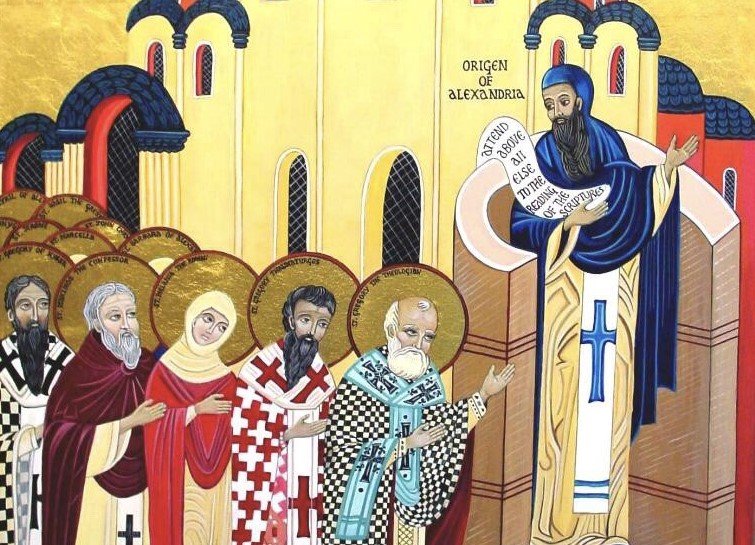4th Century Trinitarian Theology Through…Origen…to Athanasius (Dr. Blair Smith, RTS, audio)
We are presenting a recent lecture given by Prof. Blair Smith of RTS, Charlotte in his class, Trinitarian Theology.
In the first twenty minutes, he offers a compelling synthesis of the absolutely brilliant but controversial third century theologian Origen (185-253 A.D., about whom, for example, was the very first cannon of the Council of Nicea). It should be noted that Dr. Smith’s synthesis is rooted, not in reactionary criticisms projected back onto Origen and his era, but rather on the primary texts of Origen’s own writings.
[For the definitive text, see John Behr’s edition, Origen: On First Principles (Oxford University Press, 2018)]
In the second half of the lecture, Prof. Smith moves into the incredibly complex field of 4th century trinitarian theology. He structures this movement in five phases (based on the chapter, The Fourth Century Fathers by J. Warren Smith, in the work, The Oxford Handbook of the Trinity):
Phase 1: The Council of Alexandria (321) in which Arius is first condemned.
Phase 2: Constantine’s rise to power leading into the first ecumenical council, over which he presided as Emperor.
[For an excellent biography, see Rowan Williams. Arius: Heresy and Tradition. Eerdman’s, 2002]
Constantine and The Council of Nicea
It should be noted that Athanasius (293-373) was present at this Council as the assistant of Bishop Alexander.
As before with the Council of Alexandria, the bishops formally condemn Arian’s teaching for a second time, establishing the eternal divinity of the Son with the statement Christ as of the “same being” (homoousios) with the Father.
It should be further noted that this creedal statement did not resolve the Trinitarian controversy. Rather, it was the “beginning of the war for Orthodoxy.” And in this war, Arius fades away as other major figures rise. On the Nicene side, there is Athanasius, as previously noted. On the opposing side are figures such as Marcellus.
The Anti-Marcellan Phase (336-358)
In the conception of Marcellus (d. 374) followed by Eusebius of Nicomedia (d. 341), the Word was not eternally distinct but somehow “came forth” at the creation. Against his modalist position arose Eusebius of Caesarea (260-339, whom we know for his Letter on the Council of Nicea, among other writings).
Though the lecture stops here, we will present the later two phases, in case this in any way piques an interest:
The Ascendancy of the Homoians (353-370)
Again, as words are quite important…, homoousios means ‘of the same substance;’ whereas homoiousios means ‘like the substance.’ That is to say, the Son is not the same as the God the Father; He’s only like Him.
The End Game: The Eunomians vs The Cappadocians
Which brings us to our friend, Basil of Caesarea together with his lifelong friend, Gregory Nazianzus, and his younger brother, Gregory of Nyssa…all the way to the Council of Constantinople in 381, over which Gregory Nazianzus presided and in which Basil’s teaching on the full divinity of the Holy Spirit was finally accepted (to form the Niceno-Constantinopolitan Creed that we recite to this day).
Here is the link to the extraordinary lecture.
Thank you, Prof. Smith.
Enjoy!
